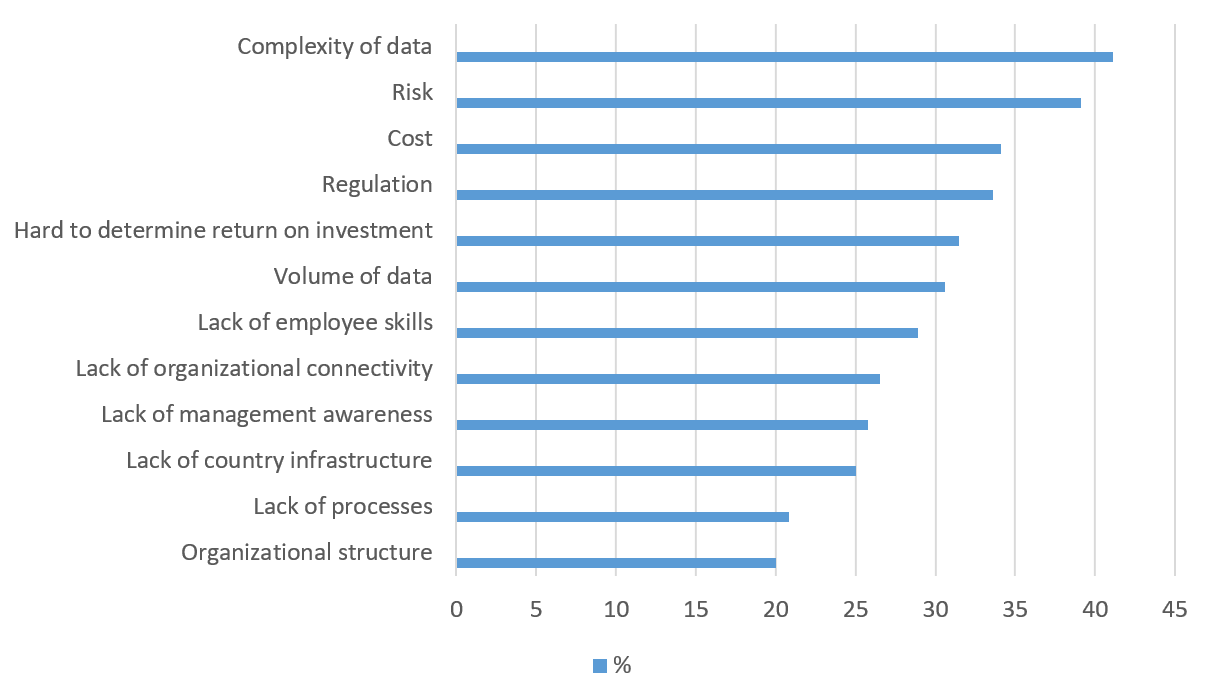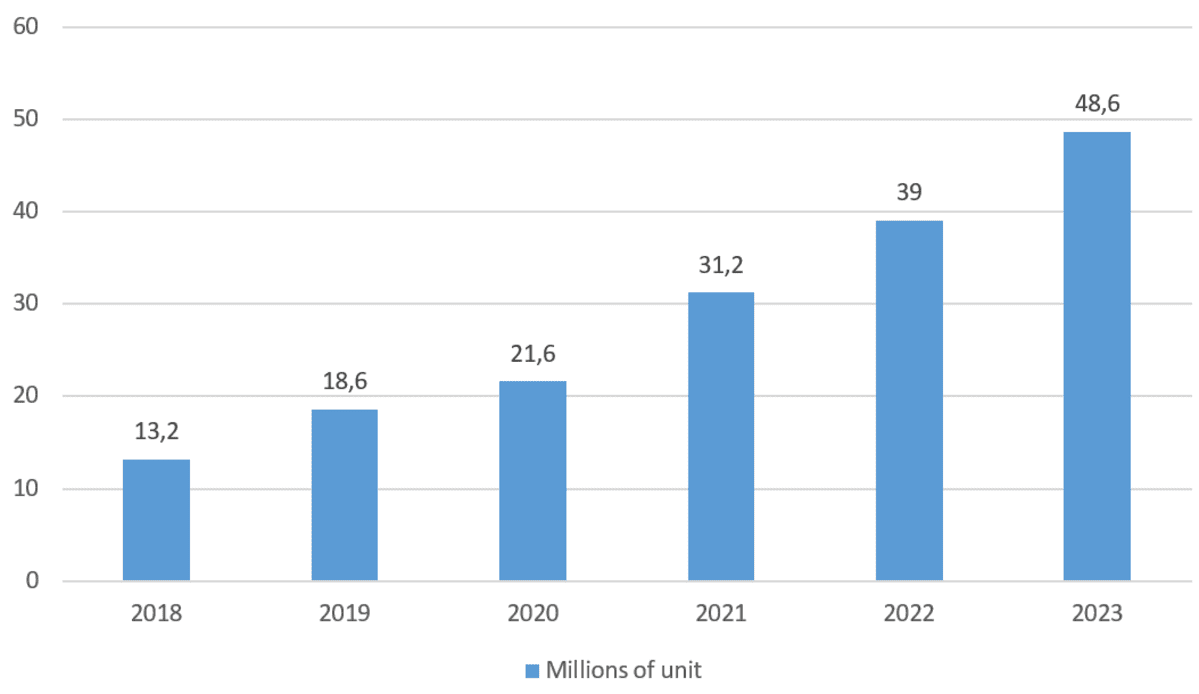Over the past decade, the digital revolution has dramatically changed the ways media, telecommunications, and financial services companies conduct their business.
Arguably financial technology (fintech) evolved to be a crucial engine fueling the digital revolution’s advancement. Here is a list of emerging fintech trends:
- Cloud Computing
- Big Data and Analytics
- Defi (Decentralized Finance)
- Cybersecurity
- Artificial Intelligence
- The Internet of Things
- Machine Learning
- Robotic Process Automation
- Software-defined Networking
- 3d Printing
- Biometric Security Systems
- Voice Technologies
According to PwC research, 80% of telecommunication and 75% of financial services organizations are currently creating jobs related to fintech. Half of those also consider it as a part of their strategic operating models.
Global investment activity in fintech reached $150.4 billion in 2019, though it slowed down to $25.6 billion in the 1st half of 2020 due to the COVID-19 pandemic.
The US-based investments account for the biggest share, standing at 62% of total world fintech funding in Q3 2020.
12 Fintech Trends for 2021
1. Cloud Computing
In the world significantly impacted by the COVID-19 pandemic, even the most traditional organizations have to find ways to interact with their customers digitally.
More importantly, they need to build a system allowing them to access, manage, analyze, and control massive data storage in a reality where managers and analysts cannot physically reach their offices.

Caption 1. Technology trends that are most important for businesses today
As about 265 million Americans are forced to live under official social distancing guidelines, there is a vital need to move organizations to the cloud as quickly as possible. Leaders should undertake a few essential steps to achieve a smooth transition:
- Providing sufficient funding to ensure the employment of all the required technology
- Integrating the cloud to the business model to reflect its widespread and long-lasting impact
- Attracting well-qualified engineers and IT-specialists to support the technology’s everyday performance effectively and to avoid any disruptions
2. Big Data and Analytics
Per The Economist Intelligence Unit survey, 37.9% of businesses see big data and analytics as one of the top three trends. Most organizations are trying to capture all possible data streaming inside and apply all kinds of analytics to it.

There are numerous positive outcomes achievable, for example:
- Faster decision making: various analysis tools allow making instantaneous decisions based on immediate data streams
- Cost reduction: it helps to find better ways of doing business by scrutinizing individual aspects of everyday operations
- Customer satisfaction: having the opportunity to analyze the customers’ behavior over time, organizations get a chance to develop new products to meet their needs more effectively
3. DeFi
Even though cryptocurrencies have not been occupying headlines that often in 2020, their underlying technology keeps tremendous potential.
For instance, blockchain usage in Europe has shifted dramatically to payments (33% of organizations), data access and sharing (30%), identity protection (30%), and data reconciliation (29%).

Caption 2. Primary challenges when implementing blockchain technology
Earlier, we covered supply chain optimization and tracing, including the IBM Foodtrust platform. The new trend, however, is decentralized finance or DeFi. It is about creating autonomous protocols (set of rules) for money to operate; no trusted party is needed. The hottest topic is lending, namely yield farming.
4. Cybersecurity
With the COVID-19 world facing the rise of online activities, cybercrime constantly expands its endeavors.

Since the beginning of the pandemic, 80% of firms have seen increased cyberattacks, cloud-based attacks rose 630%, and phishing attempts rose 600%. In 2021, the cybersecurity market is expected to grow significantly to over $200 billion worldwide.
5. Artificial Intelligence
Organizations are paying more and more attention to Artificial Intelligence power. AI has been named the most disruptive technology by managers and IT leaders worldwide, exceeding big data and analytics.

Artificial intelligence statistics by NewVantage displays that 91.5% of top businesses surveyed report having an ongoing investment in AI.
The latest statistics show that by 2021 about 15% of customer service interactions worldwide will be fully powered by AI, and by 2025 the industry is forecasted to reach $31 billion in revenue.
6. The Internet of Things
The giant ecosystem of the Internet of Things is multiplying. IoT devices are everywhere, from voice assistants to slow cookers.
The IoT market is expected to expand to $520 billion in 2021, having systems integration and data center and analytics as its biggest segments.

Caption 4. Reasons for technology usage
7. Machine Learning
Machine learning is often seen as synonymous with artificial intelligence. It is a subset of AI, making the former perform faster by reinforcing its learning abilities.
These make machine learning a key component of AI, a fact confirmed by the latest machine learning statistics.

The machine learning market has been rapidly growing. The most significant segment of this market is the deep learning software set to reach about $1 billion by 2025.
Current machine learning market research has shown that the market for AI-powered hardware and assistants is expected to grow at a high pace.
8. Robotic Process Automation
Between 2020 and 2022, almost 2 million new industrial robots are expected to be installed in factories around the world. The range of collaborative applications offered by robot manufacturers continues to expand.
Currently, shared workspace applications are most common: robots and people operate together, completing jobs simultaneously. They enable this by voice, gesture, and recognition of intent from human motion.

Caption 6. Service robots for personal/domestic use
9. Software-defined Networking
Software-defined networking (SDN) solves the issues of rapid network architecture to handle large data traffic. The world SDN market is expected to rise from $13.7 billion in 2020 to $32,7 billion by 2025.

Given the growing adoption of SDN, the demand increases among service providers and enterprises. Based on services, the SDN market has been fragmented into implementation, consulting, and support. These services help users in managing and comprehensive network infrastructure required for the effective imposing of SDN.
10. 3D Printing
From cost reduction to an increase in efficiency to fuelling innovation, 3D printing reinforces rise for many industries and has made a considerable impact in manufacturing.

The 3D printing market was valued at $13.7 billion in 2019 and is set to achieve $63.46 billion by 2025, at an annual growth rate of 29.48% over the period of 2020 to 2025.
11. Biometric Security Systems
It is vital for the fintech industry organizations to take all possible security measures. And biometrics is the best way to lift security to the next level, ensuring users’ confidence that their information is protected.

The world biometrics market is expected to reach $45.96 billion by 2024 as the partnerships between tech and biometric companies will be growing.
The range of solutions is set to grow bigger to utilize such biometric data as fingerprint, face, iris, vein, voice, DNA, palm prints, hand geometry, signature, and several behavioral features.
12. Voice Technologies
Chat-like platforms keep arriving for everything customers need to deal with on an everyday basis. Voice assistants are being developed to provide support for various issues. Voice technologies have evolved to tell the weather forecast or stream sports and improve customer service in the banking sector.
Voice technologies are divided into two main groups: the phonetic recognition of different words and the interpretation of the actual language as spoken, also known as natural language processing (NLP). The voice technology market reached about $11 billion in 2019 and will rise by close to 17 percent by 2025.

Conclusion
The financial software development services keep emerging in response to the customers’ and businesses’ needs, allowing the latter to deliver better services, store and analyze vast amounts of information, secure various communication streams, and many more.
We, at Intellectsoft, empower fintech companies and their workforces with innovative solutions and approaches. Are you and your organization looking for some? Talk to our experts and find out more about the topic and how your business can start benefiting from it today!